First Light – CDK700
February 20, 2024
Exciting news!
Sam Houston State University has a new telescope! It’s a PlaneWave Instruments CDK700 Observatory System, and it resides in the new classroom dome. First light was February 20, 2024.
“First light” refers to the first time that a telescope is used for astronomical imaging.
The CDK700 is a Corrected Dall-Kirkham design with a 4,540 mm focal length and a 700 mm aperture (f/6.5). It weighs 1,200 pounds and sits on an alt-az fork mount. The mount uses a direct drive mechanism, which means that there are no gears that can cause periodic error or backlash. It is a high-performance research and astroimaging telescope system.
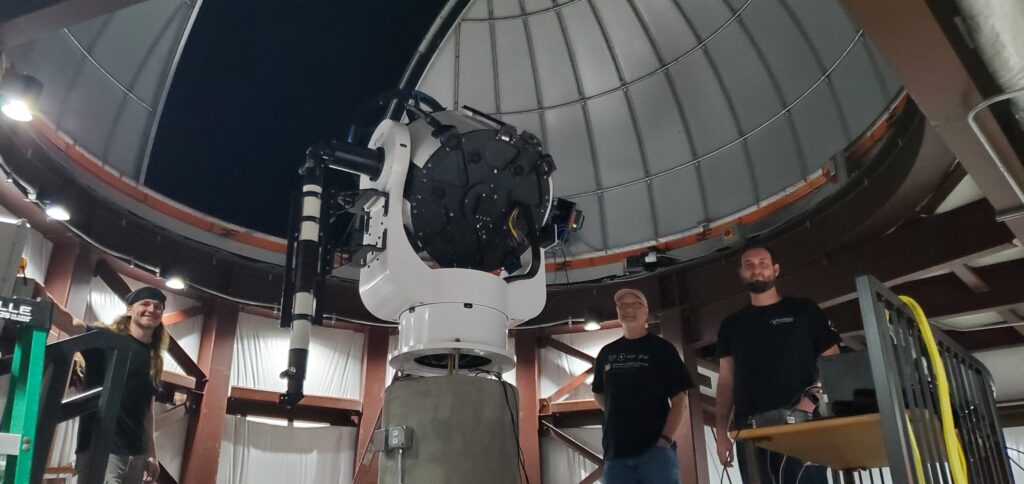
You might be wondering about the device protruding from the left side of the scope in the image above. That is a visual observation tube that can be fitted with a 2-inch eyepiece. The eyepiece always remains at the side of the scope at the same height, although it rotates around the pier along with the scope. An imaging camera is mounted on the opposite side. A remote-controlled rotating mirror directs the light path to either device.
One of the beauties of this system is that the optical viewer is at eye level for someone who is sitting down. This makes it easy for children and individuals in wheelchairs to view the sights through the scope, as well as others who want to do visual observation for long periods of time.
Those of you who have experience with astrophotography might be wondering, though, how this system can be effective for taking photos when it’s on an alt-az mount. The camera is mounted to a device that compensates for field rotation. Once properly calibrated, the camera can take very long exposures.
A crane was used to lift the scope and lower it through the top of the dome. Two technicians from PlaneWave, Cameron and Collin, connected everything up and started the calibration process. We were able to do first light the same day it was installed!

The moon was bright, but the sky was clear. The camera and filter wheel were installed. The computer was connected and communicating with all of the hardware. So, Cameron asked Michael and me, “What would you like to look at?” Well, of course, the proper answer is, “Everything!” But we had to narrow down our choices a bit. Michael selected Messier 1, the Crab Nebula.
We took a group of 30-second exposures, one each for red, green, blue, and luminance. The results were pretty impressive given the quick calibration that was performed and the bright, moonlit sky. I aligned and combined the individual channels in Photoshop the next day:
The image is a bit grainy and out of focus. But, given the fact that we only shot one image for each color channel, I think it turned out pretty good.
I sent the image to Michael, who pinpointed the position of the Crab Nebula pulsar. The pulsar is the remnant of the star whose explosion created the nebula. The pulsar is about 6,500 light years away, which means that it took the light from the explosion 6,500 years to make it to Earth. It was witnessed by and reported on by many civilizations 970 years ago in 1054 AD. Adding the distance and the time since it was observed, we can calculate that the Crab nebula is about 7,470 years old, but it only looks 970 years old to us!

A fun thing to do with a large telescope is to point it at the Moon, and then hold a white piece of paper or cardboard away from the eyepiece. The image will be projected onto the paper. If you’re patient, though, and not too picky about the image, you can also point a phone camera at the eyepiece and snap a photo:

It was getting late, and I had work the next day, so I said goodbye to everyone and headed out to the truck. The Moon was nearly overhead and brightly lit up the observatory grounds. It was a good opportunity for a couple of shots of the new classroom and dome complex.
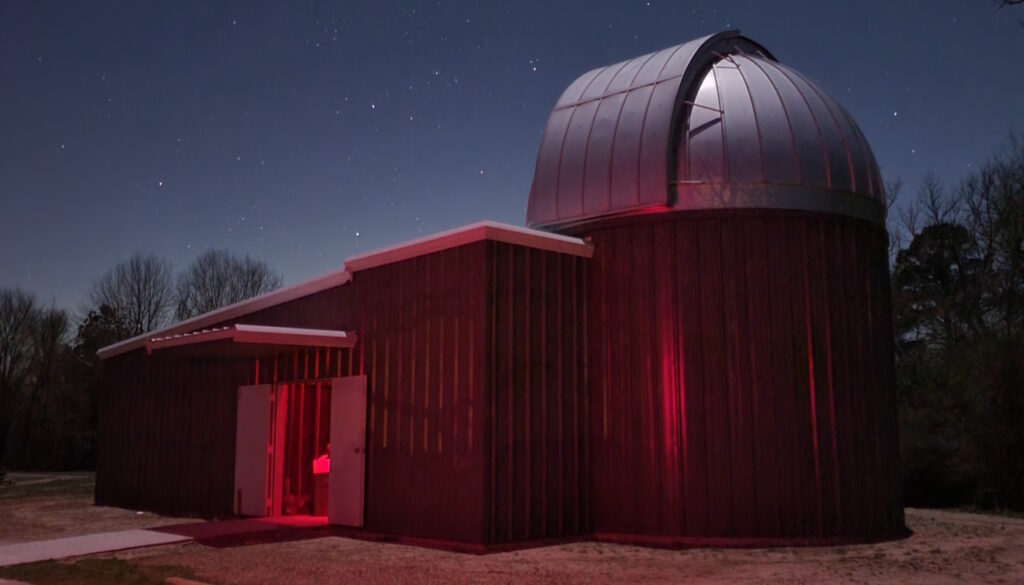
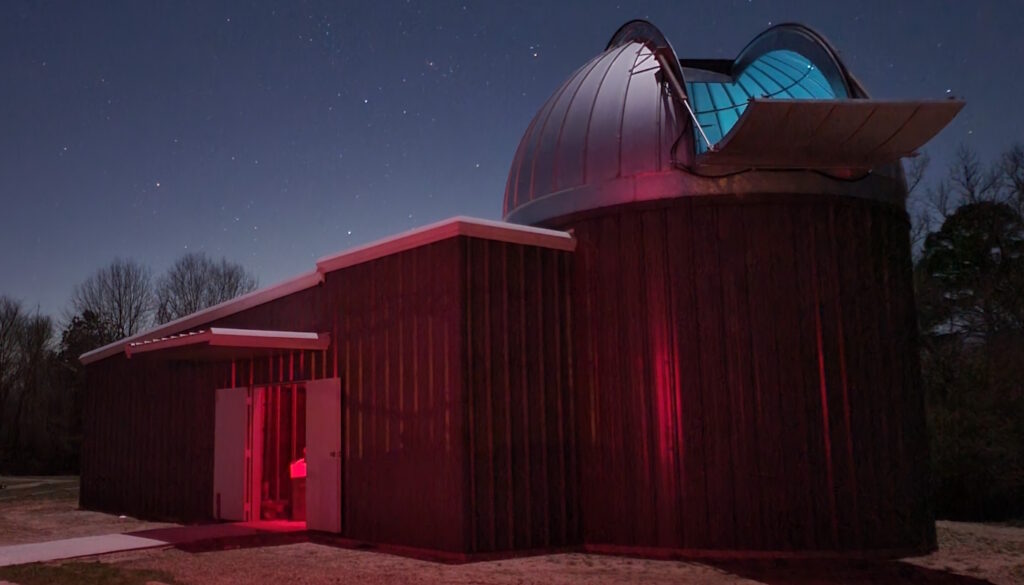
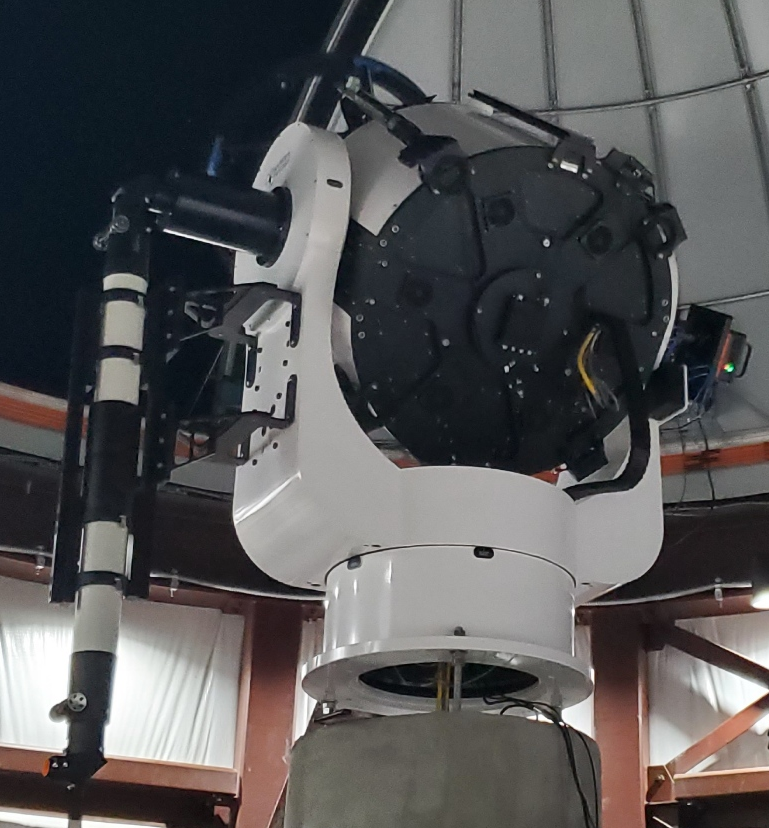

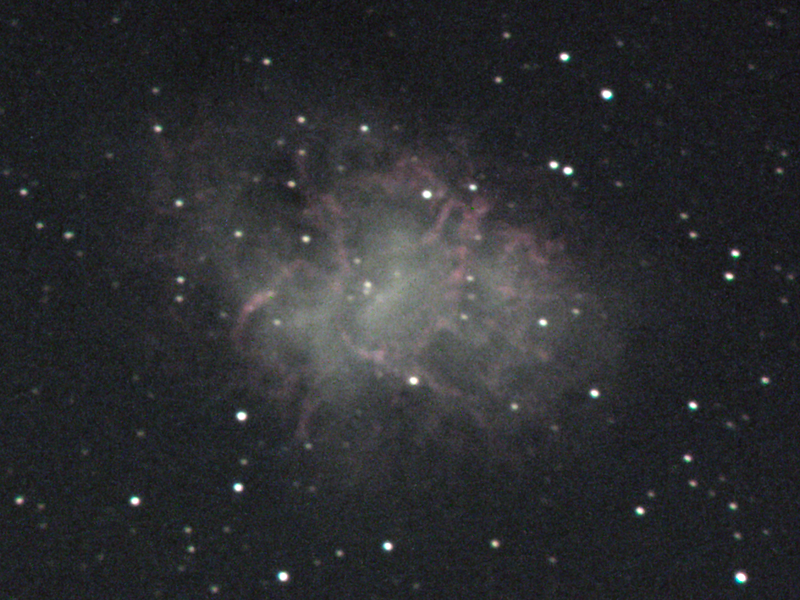
Leave a Reply